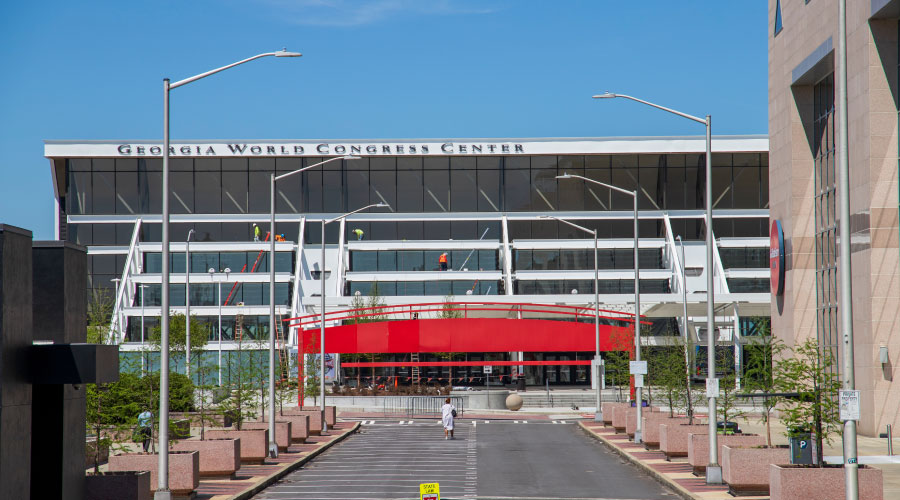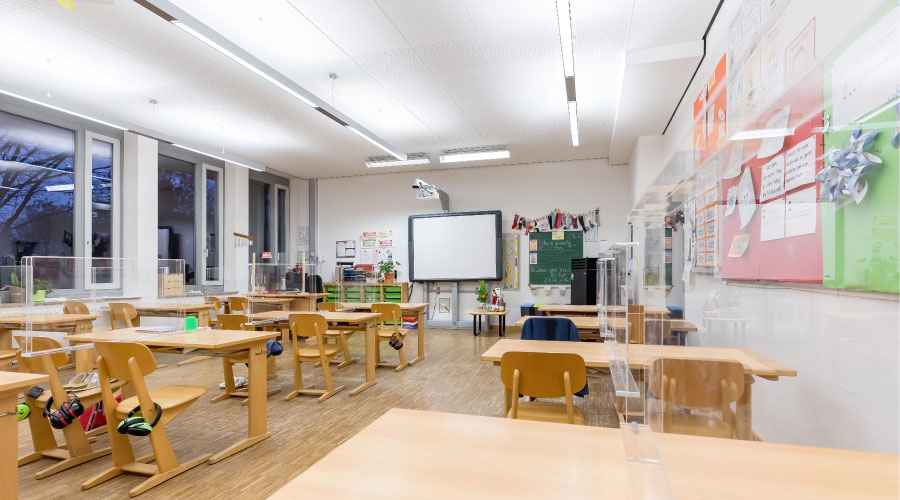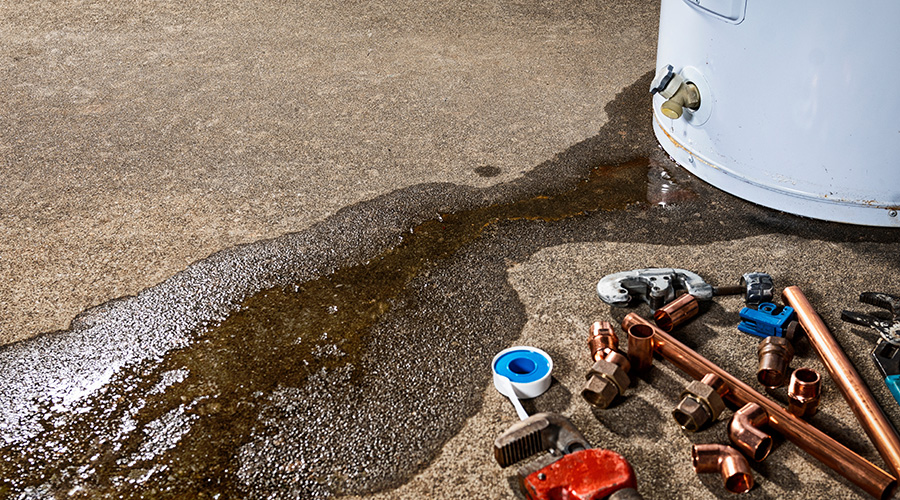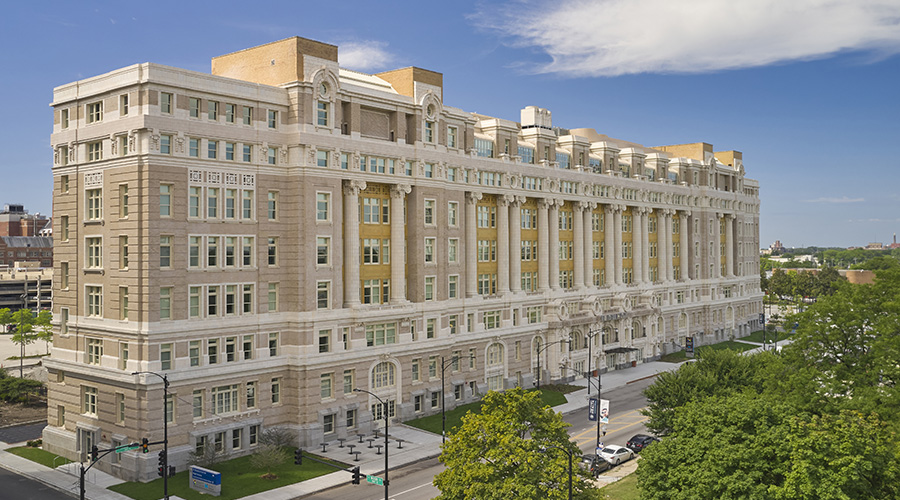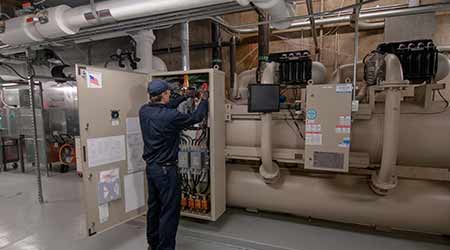 No standards exist to determine the length of time a manager should expect a chiller to operate, but workload over the years plays a major role in the decision.Photo: Daikin Applied
No standards exist to determine the length of time a manager should expect a chiller to operate, but workload over the years plays a major role in the decision.Photo: Daikin AppliedHVAC Maintenance Challenge: Chiller Repair vs. Replace
Part one of a four-part article on chiller repair or replacement issues
Purchasing a new chiller can mean thousands of dollars in expenses that many institutional and commercial facilities do not have. So it is no surprise when many maintenance and engineering managers are faced with the decision on whether to repair or replace a chiller, they make every effort to keep the old one operating.
But eventually, the time comes when most managers realize purchasing a new unit makes the most financial sense. Chiller manufacturers understand the financial ramifications of that decision, and they realize what the impact of purchasing one can have on maintenance budgets.
“It’s hard to come up with a budget that you don’t have,” says Curtis Rager with Quantech. “You do it with your own home financing. You can upgrade something or save thousands of dollars to repair it and limp it along. Then you see it’s starting to get too expensive.”
Chiller technology has improved to the point where managers, faced with rising maintenance expenses, might decide the time is now to invest in a new unit. Manufacturers can help managers notice those signs.
Age-old question
One of the first factors managers must consider when deciding to whether repair or replace a chiller is the age of the unit. No standards exist to determine how long a manager should expect a chiller to operate, but workload over the years plays a major role in the decision.
“It starts with age and reliability,” says Joe Leichner with Daikin Applied. “If the machines get to be 15, 18, or 20 years old and have had rough duty, it’s time to think about, ‘Is now the tipping point?’ For a lot of customers, reliability is very important. Depending upon the market, the tolerance for reliability issues varies.
“A lot of customers, when they have a major repair, think, ‘Well, this machine is old, and I have to put another $25,000-$35,000 in to overhaul this machine. Am I going to have to do that again in a few years?’”
When properly maintained, chillers often can exceed life expectancies. Regular maintenance can allow technicians to perform minor repairs instead of installing an entirely new chiller.
“Depending on the chiller type it should last 20-30 years, and depending on the quality of maintenance that has been done on the chiller, you very well might not need to consider such things as replacement,” says Greg Parker with Trane. “A good maintenance program combined with asset planning will provide data that enables an owner to make an informed decision that often leads to extending the chiller life by renewing key components.”
As a chiller ages, the cost to maintain it typically rises. Tracking the right key performance indicators (KPIs) can help managers make the replacement decision. Juliet Pagliaro Herman with Johnson Controls offers managers three KPIs to track:
Planned maintenance costs plus any repair costs. “Measure either proactive repairs or emergency repairs, divided by the replacement asset value,” she says.
“You’re looking for world-class function, and you’d like to have that ratio to be about 2-3 percent. When it starts creeping up into the 5-7 or 10 percent range, that’s when you have to start thinking about if it’s worth it to maintain this asset, start thinking about replacing it, or do we have to change the way we’re maintaining it?”
Planned vs. unplanned work. “As that ratio of unplanned work creeps up, that’s a sign that no matter how much of an investment you’re making in planned maintenance, you’re not able to maintain that machine in a way where it’s not failing on you,” Pagliaro Herman says.
Equipment availability. “At the end of the day, the equipment needs to be available to provide cooling when you need it to provide cooling,” she says. “When you look at the hours and the unit available to run at full capacity and you divide it by your total hours during that reporting period, you start to get that availability metric.”
As chillers get older, technicians might find it difficult to locate spare parts.
“As a chiller is aging, some of the parts may become obsolete,” Rager says. “At a jobsite recently, the expansion valve on the chiller was out and the only replacement was to go to a new valve with new controls. The cost of adding the new part was several thousand dollars. They have disabled one of the circuits and are limping by on just one.
“Knowing that a part is obsolete, they are concerned that other parts may be obsolete or becoming obsolete. So instead of investing money into a 20-plus-year-old chiller, they are looking at a replacement.”
Another factor for managers to consider with old chillers is filling refrigerant. The U.S. Environmental Protection Agency phased out a popular option, R22, as of Jan. 1, 2015.
“Looking at chillers that are 20 years old, R22 is the refrigerant,” Rager says. “If the problems with your chiller require adding refrigerant, this can become very costly. Along with that, you have environmental impacts of a chiller that may be leaking R22.”
Related Topics:












